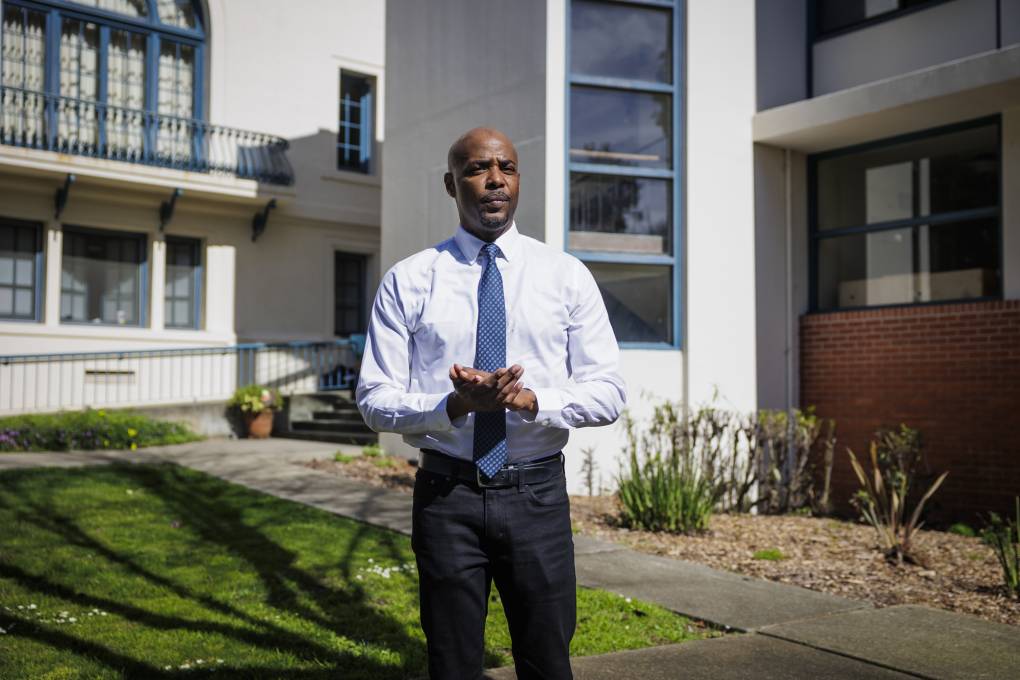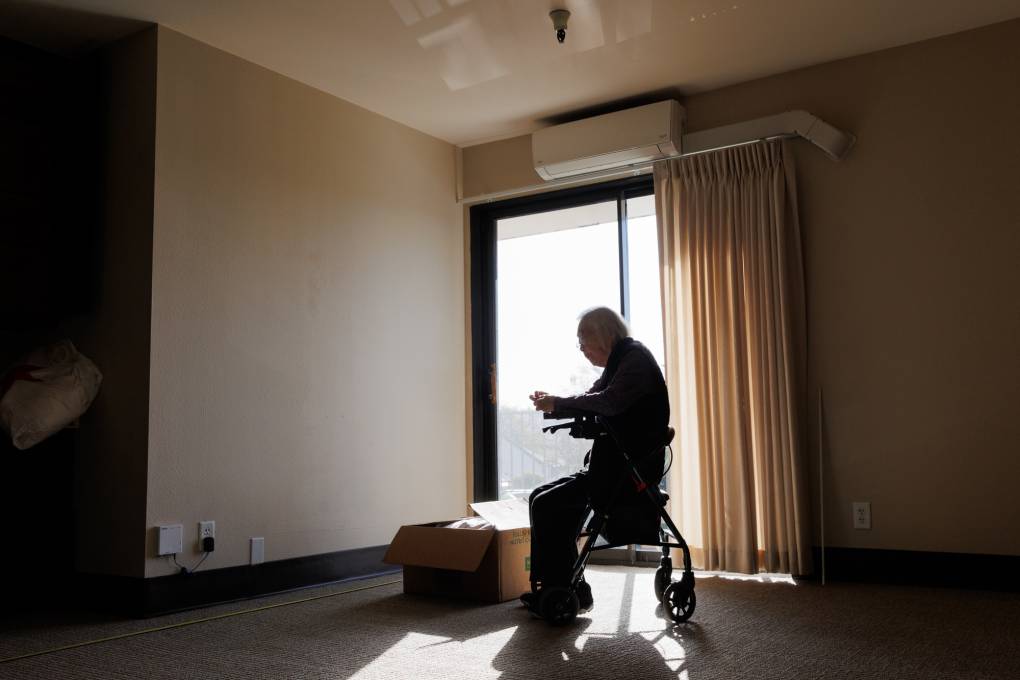Leesha Gooseberry experienced many ups and downs before being incarcerated at the Central California Women’s Facility in Chowchilla, a city 40 miles northwest of Fresno. It was in prison that a routine gynecological check-up wound up changing her life irreparably.
Forced Sterilization Survivors of California Prisons Face Reparations Deadline

She was 38 when a doctor at the facility told her that she would need a partial hysterectomy to remove fibroid tumors.
But it wasn’t until the year after she was released from prison — almost seven years after the procedure — that her primary care doctor informed her that she had been given a full hysterectomy, meaning her uterus and cervix were completely removed without her informed consent.
“They took everything out of my stomach. I was hurt, depressed, and I just didn’t know what to do with myself,” Gooseberry, who is now 55 and lives in her home state of Louisiana, told KQED. “I just felt incomplete.”
State-run hospitals and institutions sterilized people — mostly Black, Latino and Native American women — from 1909–1979 as part of state eugenics policies. At least 100 women were sterilized in the early 2000s, well beyond when the state banned the practice in 1979.
In some cases, women were told they had cysts or cancerous growths that needed to be removed, only to wake up or learn several years later that doctors had performed other procedures such as tubal ligations, hysterectomies or ovary removals.
Following a state law passed in 2021, people sterilized without consent while incarcerated in California’s women’s prisons are eligible for at least $15,000. The Dec. 31 deadline for survivors to apply for funding is quickly approaching. Out of tens of thousands of people who were forcibly sterilized, less than 500 survivors or their descendants have applied to the reparations program, according to state data.
Far fewer people have actually received their compensation.
Now, time is running out for survivors of a state-run eugenics effort to receive reparations.
“Finding people, getting them to come forward and reaching people is challenging,” said Dr. Jennifer James, an associate professor at UCSF who has studied involuntary sterilization. “Systems and medical records were not quite what they are today as they were in 1920. Records weren’t always kept or weren’t kept well, and the whereabouts of those records are unclear.”
The California Victim Compensation Board received 510 applications as of Oct. 25, according to data provided by the state. A total of 108 people were approved for the compensation.
That’s compared to the 600 survivors estimated to be living when California set aside $4.5 million for survivors or their descendants two years ago. That’s a small fraction of the more than 20,000 people, state records show, who were forced to undergo hysterectomies and other sterilization procedures in California since the early 1900s.
To apply, survivors or their descendants must fill out an application online or by mail detailing their experience. Survivors must have been alive at the start of the compensation program for their descendants to benefit.
Only three survivors from 1909–1979 have applied and been approved, according to James.
“That’s really devastating,” she said. “There were tens of thousands of people affected. A lot of those people are no longer alive and aren’t eligible, but we’re really trying to spread the word.”
Survivors who can prove they were wrongfully sterilized will receive $15,000. A second and final payment of $20,000 will be sent to survivors whose applications were approved by October 2024. Any remaining money will revert to the general fund, according to the compensation board.
Gooseberry, who was surprised to learn other women were sterilized without consent, received the first portion of her compensation last year. Now, she is encouraging others to come forward and apply.
“I thought it was just me,” said Gooseberry, who now advocates for incarcerated women and the reparations program. “I’ve been trying to reach as many people as I can.”
Describing a traumatic life event in detail can be extremely difficult, so it was particularly painful for Carmen Worthy to learn her application was rejected.
Worthy, who is currently incarcerated at California Central Women’s Facility, said a prison doctor recommended removing her uterus to stop some heavy bleeding she was experiencing due to uterine fibroids. She took his advice and went through with the procedure.
“I’m not a medical doctor. So, all my yeses were from him telling me what needs to be done. I would have never done it on my own,” Worthy said in a phone interview. “You know what I mean?”
She’s not alone in getting rejected by the compensation board. So far, over 400 applications, the vast majority of those submitted, have been denied.
Ray Aspuria, a spokesperson for the compensation board, said that many victims of the state’s sterilization practices have passed away or don’t have direct descendants who could apply for the funds.
“It is an aging population, and survivors may not have direct descendants,” he said.
Applications will not be accepted beyond Dec. 31, but the state’s latest budget includes language to add up to $1 million for the compensation program through legislation in the next few years.
Securing that extra funding will depend on the outcome of a forthcoming report on the extent to which forced sterilizations took place at Los Angeles County General Hospital, according to Aspuria.
“A lot of people don’t want to talk about being in these facilities that were really troubling and a really horrific time in their lives,” said James, a vocal advocate for sterilization survivors. “But continuing to spread the word to survivors is just so critical so as many people can get compensated as possible before the end of the year.”
Despite the uncertainty of coming forward for many applicants, James stressed that anyone who thinks they may qualify should apply, even those who may have unknowingly consented to the procedure.
“The medical record is the word of the person perpetuating the harm,” she said. “Many people have been approved who did sign a consent form because they stated that they didn’t know what they were consenting to, no one reviewed it with them, and they thought they were having a different procedure.”
More information on how to apply for compensation for involuntary sterilization can be found at the California Victim Compensation Board website. Applications are available in English and Spanish.
Anyone needing assistance with the application can call the compensation board’s toll-free helpline at 1-800-777-9229 from 8 a.m.–5 p.m. Monday–Friday.


